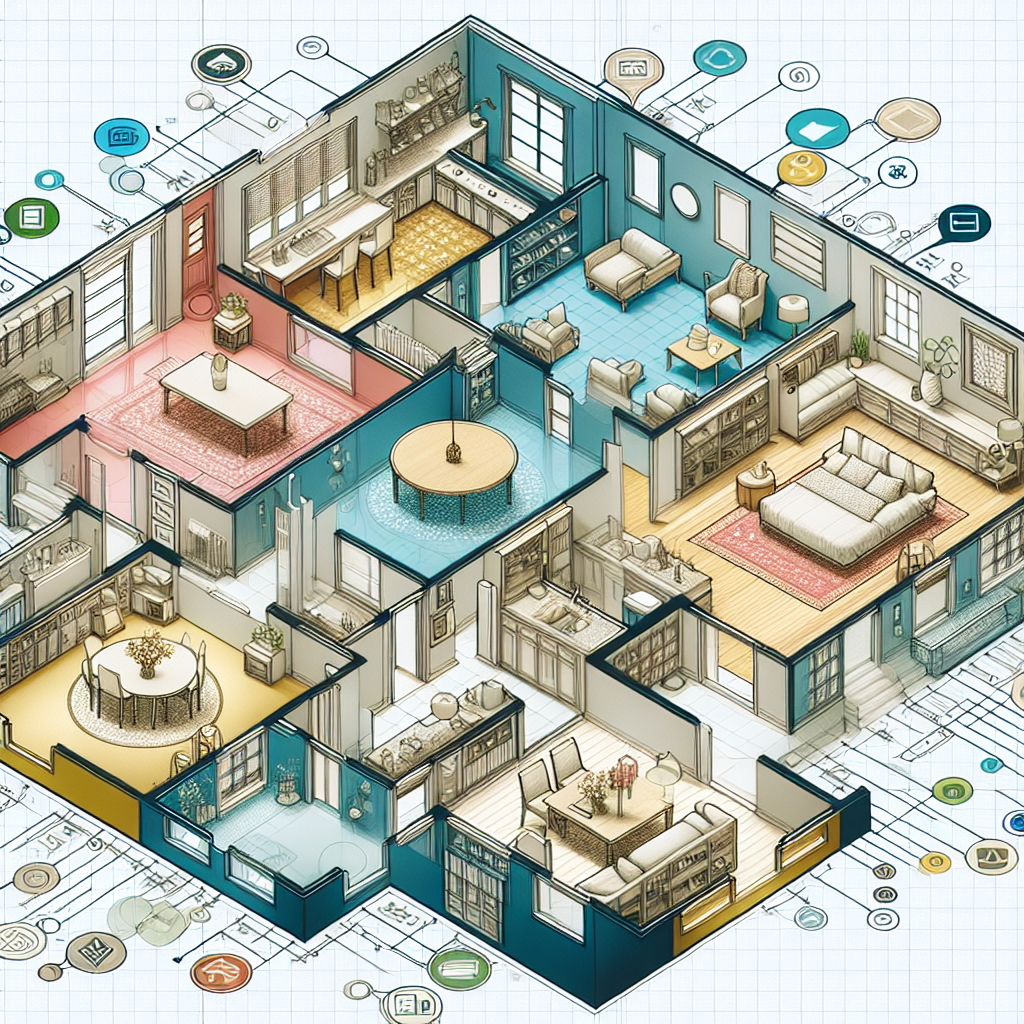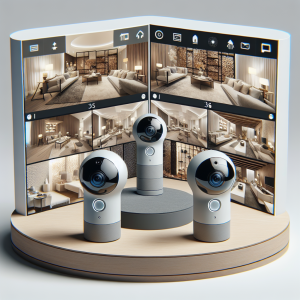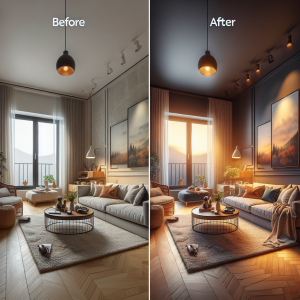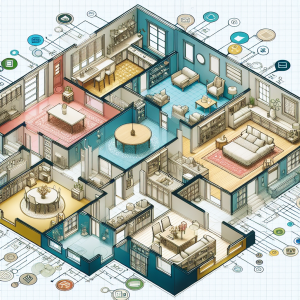Explore how interactive floor plans and virtual tours revolutionize real estate marketing, enhancing navigation and boosting buyer engagement significantly.

This blog explores the revolutionary integration of interactive floor plans with virtual tours in the real estate sector, emphasizing how this technology enhances property marketing and buyer engagement. It discusses the advantages for agents and clients, including improved accessibility and informed decision-making, particularly in high-demand markets. The blog also addresses technical challenges and the necessity for industry adaptation through training and partnerships with tech firms. Ultimately, it underscores how these digital tools are reshaping real estate marketing strategies and optimizing buyer experiences.
In today’s fast-paced real estate market, the demand for efficient, innovative tools that enhance user experience and drive decision-making is more prevalent than ever. Interactive floor plans integrated with virtual tours represent a revolutionary stride in digital property showcasing. This dynamic duo not only breathes life into static layouts but also provides prospective buyers and renters with a seamless, immersive experience that traditional photographs cannot match. In fact, research suggests that listings with interactive features can capture over 40% more views than those without, significantly boosting engagement and potential sales.
Embark with us as we delve into the transformative realm of interactive floor plans linked with virtual tours, exploring how this integration can redefine navigation and presentation in real estate marketing. We will dissect the mechanics behind these tools, the benefits they unfold for both agents and clients, and address common challenges in implementing them effectively. Join us to uncover the strategic advantage of merging detailed layouts with real-time, clickable tours that offer a 360-degree understanding of properties at just a glance.

In today’s hyper-competitive real estate landscape, the deployment of technological innovations can distinguish between a property that sells rapidly at a premium price and one that languishes unnoticed. Among these innovations, the integration of interactive floor plans with virtual tours stands out as a game-changing tool in property marketing. This combination not only elevates the static information traditionally available but also enlivens the property showcasing experience incomparably.
The mechanics of interactive floor plans linked with virtual tours are intriguing. By utilizing cutting-edge software and 3D modeling technology, real estate agents can create accurate, detailed representations of property layouts that users can engage with interactively. These floor plans often incorporate clickable areas that instantly teleport users into correspondingly high-quality, 360-degree images or live video tours of the actual rooms. Such integrations allow prospective buyers and renters to visualize the flow of the property, understand spatial relationships, and gauge the practicality of the layout without ever stepping foot inside.
One prime example of this technology in action can be observed in luxury real estate markets such as New York City and Los Angeles, where high-value properties are often showcased using these tools to attract international investors who may not be able to visit in person. Agents report that virtual open houses featuring interactive floor plans significantly increase engagement, with potential buyers spending upwards of triple the amount of time exploring these listings compared to traditional ones.
The benefits of these tools are manifold. For agents, the primary advantage lies in the vastly enhanced engagement and accessibility of listings. Properties marketed with interactive floor plans and virtual tours reach a broader audience, appealing not just to local buyers but also to international and out-of-state clients who can explore the properties conveniently from their devices. These in-depth explorations help in building a higher emotional attachment, which could translate into quicker sales and possibly even at higher prices.
Moreover, from a client perspective, the flexibility and depth of information available at their fingertips empower them to make informed decisions faster. This can be particularly crucial in markets with high demand and competitive property listings, where the speed of decision-making can be pivotal.
However, there are challenges associated with implementing these technologies. The primary barrier is the cost and technological expertise required in creating high-quality interactive floor plans and virtual tours. Professional equipment and software can be expensive, and there is a steep learning curve involved in mastering their use. Additionally, there’s the challenge of technological integration and ensuring that the digital tools are compatible across various platforms and devices to ensure a seamless user experience.
To overcome these challenges, real estate firms need to invest in training and possibly partnering with tech companies that specialize in digital real estate marketing tools. An alternative could be adopting more scalable solutions like software that automates part of the 3D modeling process or subscription services that offer virtual staging of properties at a lower cost.
In conclusion, as we advance towards concluding our exploration of the dynamic integration of interactive floor plans with virtual tours, it’s unmistakable that these tools are reshaping the frontier of real estate marketing. They not only enhance the way properties are presented and experienced but also significantly optimize the decision-making process for buyers, providing them with a comprehensive, intuitive understanding of their potential new homes. In upcoming discussions, we will take a closer look at specific market trends influenced by these innovations and examine the broader implications for the future of real estate digitization. Stay tuned to journey deeper into how technology continues to refine the fabric of real estate interactions.

The reception and measurable impact of interactive floor plans with virtual tours in real estate continue to inform marketing strategies across different markets. A notable example is from a recent real estate tech conference where multiple agents shared success stories using these tools. For instance, a condo development in Miami reported a 30% quicker sales cycle after implementing interactive virtual tours, aligning with statistics that suggest listings with virtual tours get clicked 40% more than those without. This evidence highlights not just convenience but a significant enhancement in how information is consumed and interpreted by potential buyers. They can measure spaces, simulate furniture placement, and engage more deeply with the property, all of which drive quicker, more confident decision-making processes. This technology is not only redefining user experience but also setting new standards for how properties are presented in the digital age.As we pivot to explore upcoming market trends in the integration of technology with real estate sales, it is crucial to understand how these innovations, including interactive floor plans and virtual tours, continue to shape consumer expectations and redefine competitive edges in the bustling sector of real estate. Stay tuned for a detailed analysis of emerging technologies and their potential to further transform the real estate landscape.
Interactive floor plans and virtual tours represent a significant advancement in real estate marketing, enhancing user engagement and comprehension by merging detailed layouts with immersive, clickable tours. These tools not only increase views by over 40% but also provide a comprehensive property understanding, revolutionizing how agents present listings and how clients navigate potential homes. As the real estate market evolves, embracing this technology will be crucial for staying competitive. Agents and developers should consider implementing these interactive features to captivate a tech-savvy audience and elevate their marketing strategies significantly.
Interviews, tips, guides, industry best practices, and news.









